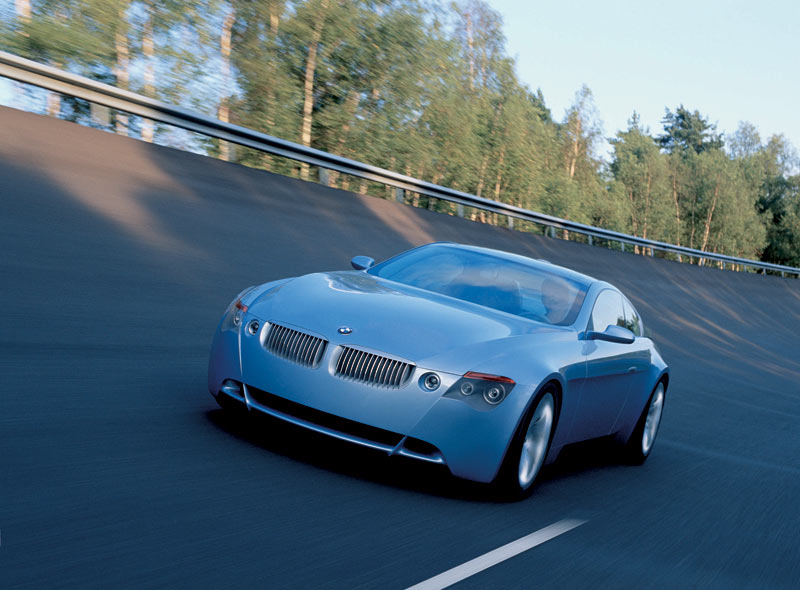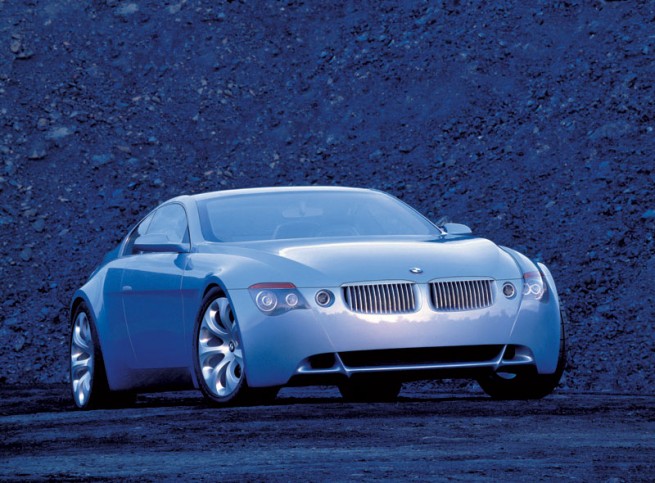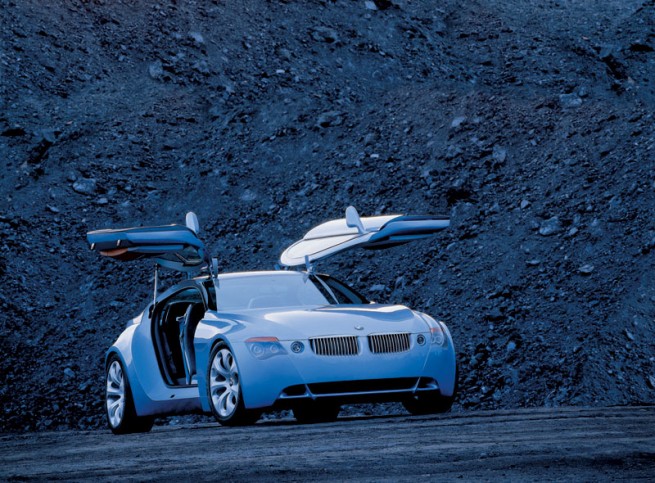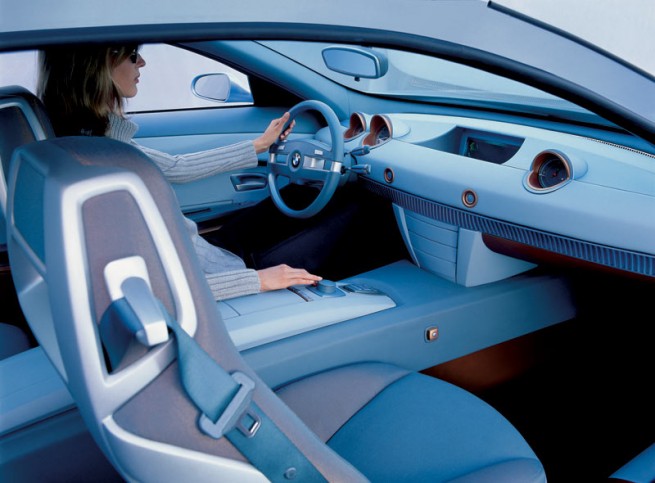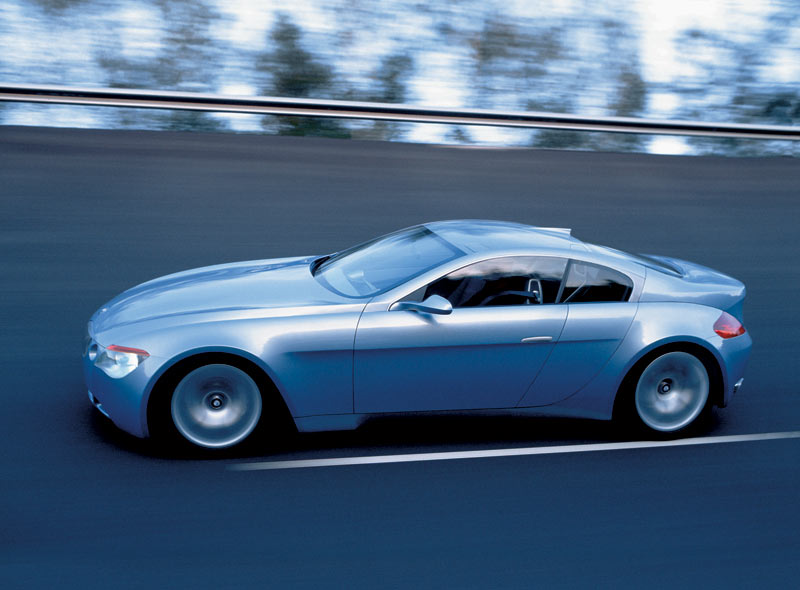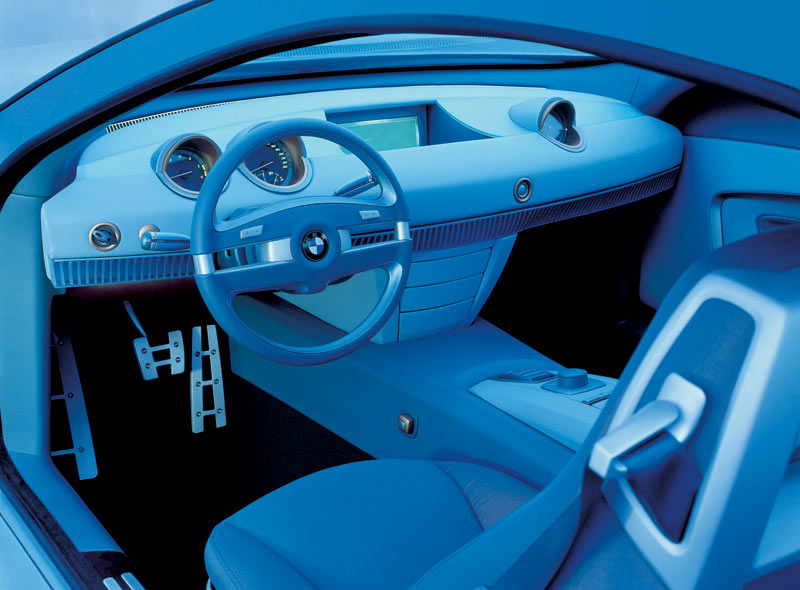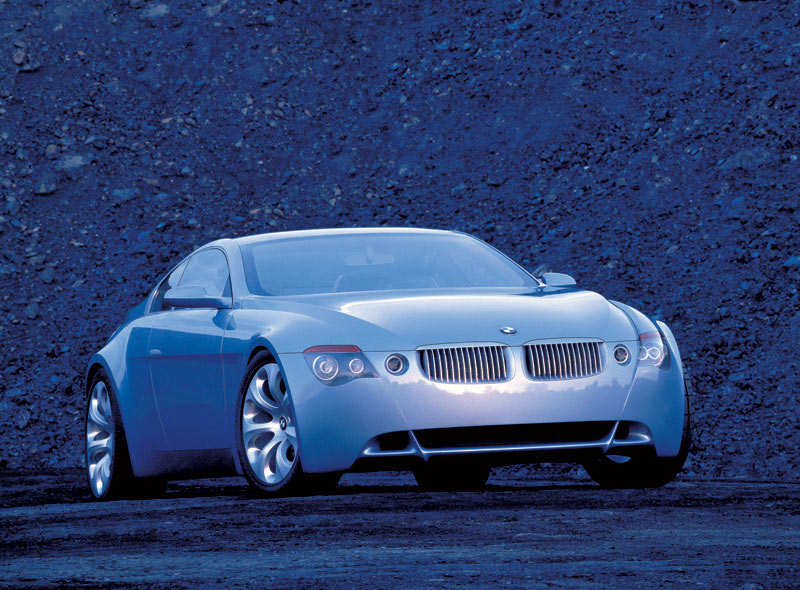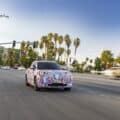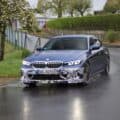Unveiled at the 1999 Frankfurt Motor Show, the BMW Z9 (or Z9 Gran Turismo, Z9 GT) was designed by Chris Bangle, ex-Chief Designer of BMW Group, and represented an important turning point in the subsequent evolution of BMW’s design language. Among the features were an aluminum space frame and a V8 turbodiesel unit. During the 2000 Paris Auto Show a convertible variant of the Z9 was debuted.
The Z9 Gran Turismo Concept car features the long hood and short rear deck that have become hallmarks of BMW sport coupe design. The Z9 featured a carbon fiber skin over an aluminum space frame offering both high rigidity and light weight.
The “face” of the Z9 incorporated trademark BMW design elements, such as the dual round headlights flanking the central kidney grille. Large wheels, 20-inch front and 21 inch rear, provided a hint of the performance capability of the Z9. Front and rear turn signals featured neon light technology, while rear lights incorporated light-emitting diodes (LED).
The Z9 GT also featured unique gull wing doors that also opened like a conventional hinged door, allowing the driver or front passenger to access the coupe in the normal fashion. Much of the styling found on the current E63 BMW 6 Series is derived from the Z9.
The Z9 did not make it into production, but many of its innovations did. The interior included an early concept of BMW’s iDrive system, called the Intuitive Interaction Concept. At the heart of the BMW Intuitive Interaction Concept is a single console-mounted rotary/push button which controls a variety of functions.
This single module allows the user to select and operate several hundred functions within the automobile. Used in conjunction with a monitor and four large buttons arranged in a square around the central rotary/push button, all drive, comfort, communication and audio functions can be easily activated.
The rotary/push button falls readily to hand for the driver and front seat passenger and allows the driver to activate functions without the need to look at them while driving.
A large 8.8-inch monitor in the center of the dashboard displays all the information the driver requires in a simple graphic display, apart from the speedometer and tachometer which are conventional analog instruments.
The monitor is positioned within the driver’s field of vision, allowing it to be viewed while concentrating attention on the road ahead.
Another innovation in the BMW Z9 GT was the world’s first V8 turbo diesel for non-truck use, later produced for the BMW 7 Series 740d model.
The 3.9-liter engine incorporates common rail, direct injection and produces 413 lb-ft of torque and 245 horsepower.
Looking forward into the future, we can only hope that another fascinating concept, Vision EfficientDynamics, will eventually make its into a production car, of course, with the necessary adjustments.


